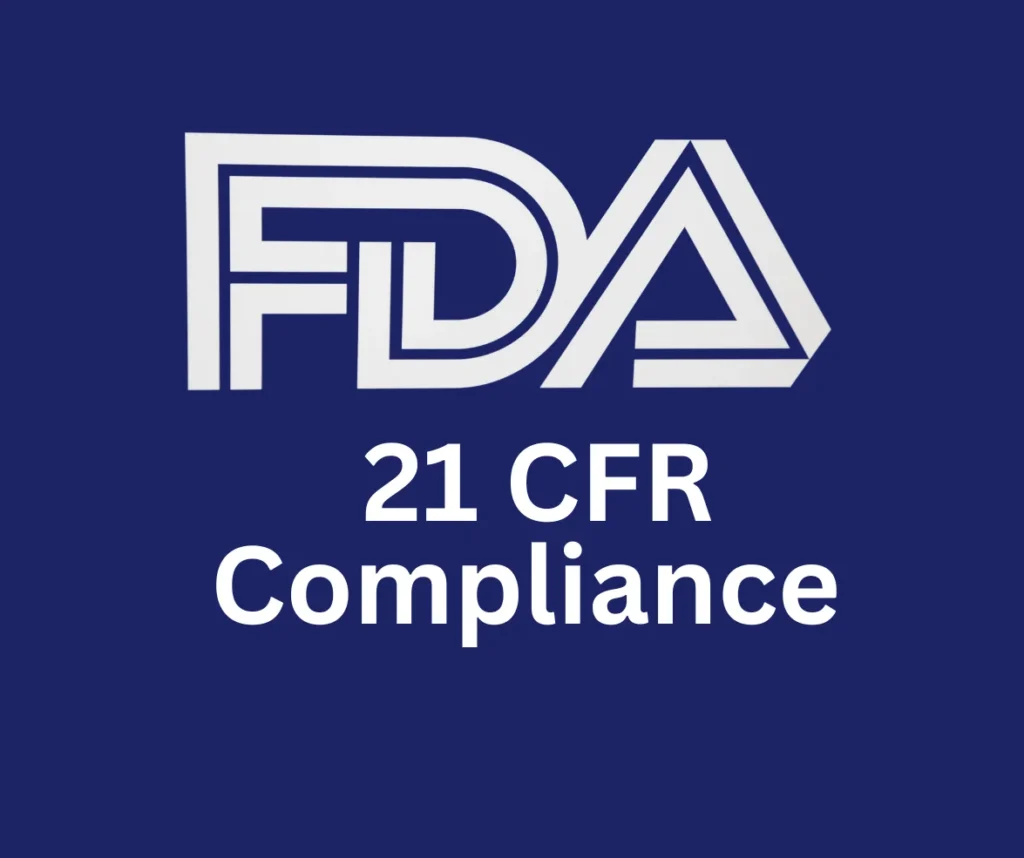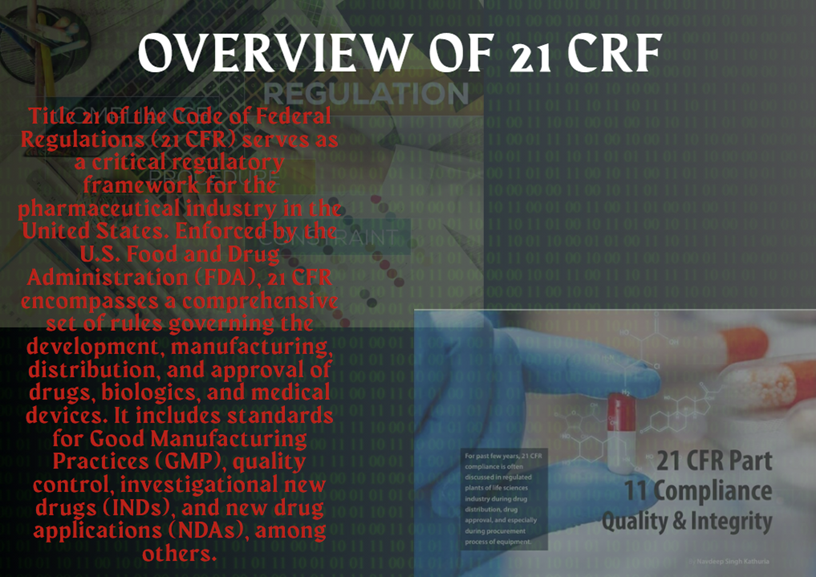21CFR is the code of federal Regulation. It is the regulation which gives by the USA/America for the pharma Industries.
21CRF
It is started in 1935 by the America’s 32nd President (Franklil. D. Roosevlt). It is very useful for pharma Industries in future for the Manufacturing processing packaging or holding of drug and finish pharmaceutical’s. It is the regulation for the food and drugs. This paper explores Title 21 of the Code of Federal Regulations (21 CFR), highlighting its essential role in regulating various aspects of the pharmaceutical industry in the United States. It emphasizes 21 CFR’s impact on ensuring the safety, efficacy, and quality of pharmaceuticals and biologics. The paper also examines its relevance in modern regulatory practices and its global influence on regulatory compliance and good manufacturing practices (GMP). It will most useful guidelines for new Pharmacists. It is the future of the pharma Industries.
INTRODUCTION
Title 21 of the Code of Federal Regulations (21 CFR) serves as a critical regulatory framework for the pharmaceutical industry in the United States. Enforced by the U.S. Food and Drug Administration (FDA), 21 CFR encompasses a comprehensive set of rules governing the development, manufacturing, distribution, and approval of drugs, biologics, and medical devices. It includes standards for Good Manufacturing Practices (GMP), quality control, investigational new drugs (INDs), and new drug applications (NDAs), among others.

CFR give the 50 titles in the federal register.
Title 1: General Provision Title 11: Federal Elections
Title 2: Grants and Agreements Title 12: Banks and Banking
Title3: The President Title 13: Business Credit and Assistance
Title 4: Accounts Title 14: Aeronautics and Space
Title 5: Administrative Personnel Title 15: Commerce and Foreign Trade
Title 6: Domestic Security Title 16: Commercial Practices
Title 7: Agriculture Title 17: Commodity and Securities Exchanges
Title 8: Aliens and Nationality Title 18: Conservation of Power and Water Resources
Title 9: Animals and Animal Products Title 19: Customs Duties
Title 10: Energy Title 20: Employees’ Benefits
Title 21: Food and Drugs
21 is come from the Title 21: Food and Drugs. Which title include the all guidelines of the manufacturing, packaging or holding of drug and finish Pharmaceutical’s. The 21 CFR are divided in the two parts:
Part 210: GMP for manufacturing, processing, packing, or holding of drugs.
Part 211: GMP for finished pharmaceuticals
21 CFR-Parts 210 And 211
PART-210.1: Status of current good manufacturing practices.
PART-210.2: Applicability of current Good manufacturing practices
PART-210.3: Definitions.
PART-211: Sub part: A- General Provisions
PART -211; Subpart: B -Organization and personnel
PART-211: Subpart: C -Buildings and facilities,
PART-211: Subpart: D -Equipment.
PART-211: Subpart: E – Control of equipment and drug product containers and closures,
PART -211: Subpart: F – Production and Process Controls.
PART-211: Subpart: G -Packing and Labelling Control
PART -211: Subpart: H -Holding and Distribution
PART -211: Subpart: I -Laboratory Control
PART -211: Subpart: J – Records and Controls
PART-211: Subpart: K-Returned and salvaged Drug products
This regulatory structure ensures the safety, efficacy and quality of pharmaceutical products, thereby protecting public health and maintaining trust in the pharmaceutical industry. Compliance with 21 CFR is mandatory for companies seeking FDA approval to market drugs or devices in the U.S., and adherence to these regulations minimizes the risk of contamination, data integrity issues, and product recalls.
Moreover, 21 CFR has significant global influence, serving as a model for regulatory standards worldwide and foundation promoting consistency in drug safety and quality. In this way, 21 CFR is more than a set of regulations it is a for ethical and safe pharmaceutical practices that impact every aspect of drug development and patient care
History of the 21 CFR:
Code of federal Regulation (CFR) it is gives by the USA/America. It is started in 1935ByAmericas32ndpresident Franklin D. Roosevelt. 1935- Instrumental in passing the federal Register Act empowered the National Achiever of the US to form an Administrative Committee publishes the federal as Register. The federal Register Act- Amended in1937 to provide ―codification‖ of all Regulation every five years known of code of federal Regulation. The first edition in 1938 and included all finalized Regulations that were published in the federal Register From march 14, 1936 to June 1, 1938. Beginning in 1963 for some titles and for all titles in 1967, the office of the federal Register began publishing yearly revision. Beginning in 1972- published revision was conducted in staggered quarters.
Parts of the 21CFR:
21 CFR Parts 210: Current Good Manufacturing Practice in Manufacturing, Processing, Packing, or Holding of Drugs. 21 CFR Parts 211: Current Good Manufacturing Practice for Finished Pharmaceuticals.
CONCLUSION: The 21 CFR (Code of Federal Regulations) refers to Title 21 of the U.S. Code of Federal Regulations, which governs food and drug-related activities, including the regulation of pharmaceuticals, medical devices, food safety, and other related areas by the U.S. Food and Drug Administration (FDA). This title outlines the standards for manufacturing, labelling, and distribution of drugs and medical devices to ensure public safety and efficacy. Key sections within 21 CFR cover topics such as Good Manufacturing Practices (GMP), clinical trials, and labelling requirements for drugs and biologics. The regulations are critical for companies in the healthcare and pharmaceutical industries to ensure compliance with FDA standards. A review paper would likely conclude by discussing the balance that the FDA strives to maintain between protecting public health and encouraging innovation, emphasizing that while compliance with 21 CFR is complex, it is critical to ensuring the safety and efficacy of drugs, medical devices, and food products.

